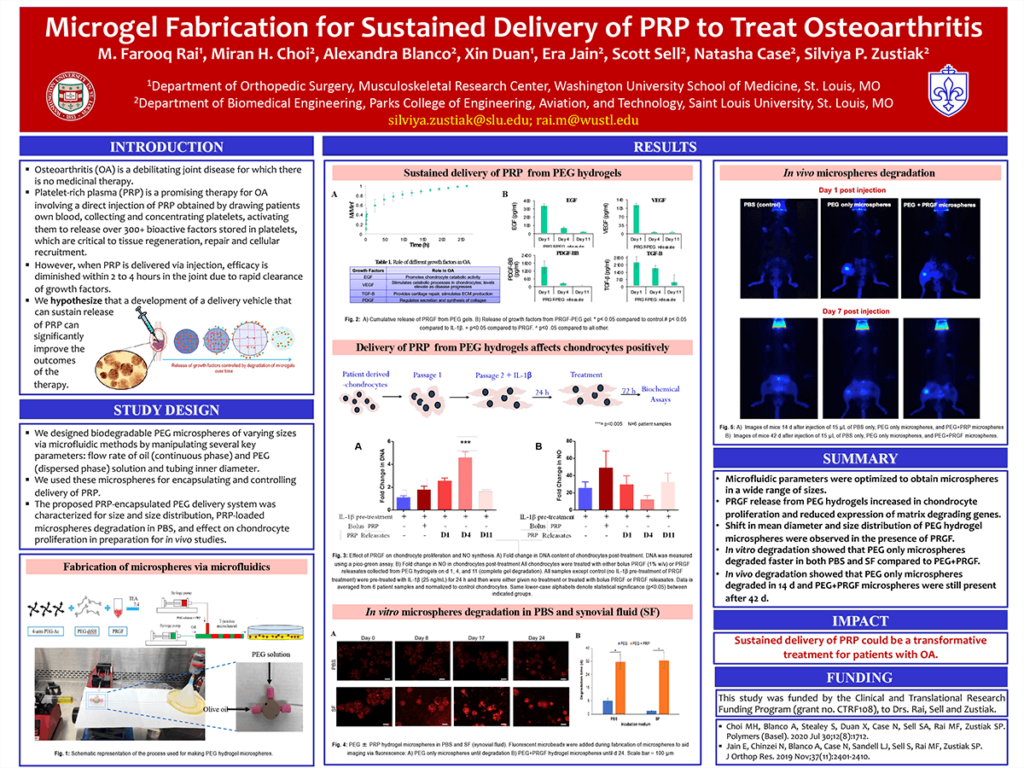Introduction: Osteoarthritis (OA) is a debilitating joint disease that affects 50+ million American adults. Current treatment options are not optimal. Platelet-rich plasma (PRP) is a promising option. However, when PRP is delivered intra-articularly, it is rapidly cleared from the joint, diminishing treatment efficacy. We hypothesize that a delivery vehicle that can sustain PRP release will improve therapy outcomes.
Methods: PRP-PEG microspheres were fabricated by mixing 4-arm PEG-acrylat, PEG-dithiol crosslinker, and lyophilized PRP (PRGF) in 0.3M triethanolamine. When this gel precursor solution was passed through a T-junction along with oil, PRP-PEG droplets were formed, collected in an oil bath and left to gel overnight. Microspheres were collected by centrifugation, washed and sieved through a 200 m nylon mesh. Polydispersity was calculated as % coefficient of variance (CV). Microsphere degradation was followed by measuring diameter. To gauge cumulative release, PRGF-PEG hydrogel slabs were placed in PBS and samples were taken at different time points until degradation. Chondrocytes isolated from human articular cartilage were cultured, pre-treated with TGFβ, proliferation was tested with PicoGreen and gene expression with qPCR. Powder PRP was loaded at 10% w/v. Infrared FluoroSphere-loaded PEG microspheres with or without PRP were injected into the mouse knee and retention was assessed by IVIS.
Results: PRP-PEG microspheres had smooth surface and narrow size distribution (7-25% CV). Microsphere diameter decreased with increased oil flow rate and decrease in PEG flow rate from 420 to 90 μm. Upon sieving, microspheres were injectable through a needle and retained structural stability upon injection. PRP was released over 11 d with 40% release. PRP-PEG releasate from hydrogel had beneficial effect on chondrocyte proliferation and expression of certain OA-related genes compared to bolus PRP. Microspheres were stable in synovial fluid for at least 72 h where degradation was faster than in PBS. Finally, PRP-loaded microspheres remained in the knee up to 42 d after injection.
Impact: Sustained delivery of PRP could be a transformative treatment for patients with OA.
Organization – Washington University in St. Louis
Ali L, Patel P, Vakaki M, Kremitzki C, Waligorski J, Chadrasekaran V, Kelley K, Bachman G, Rai MF, Choi HM, Blanco A, Duan X, Jain E, Case N, Sell S, Zustiak SP
